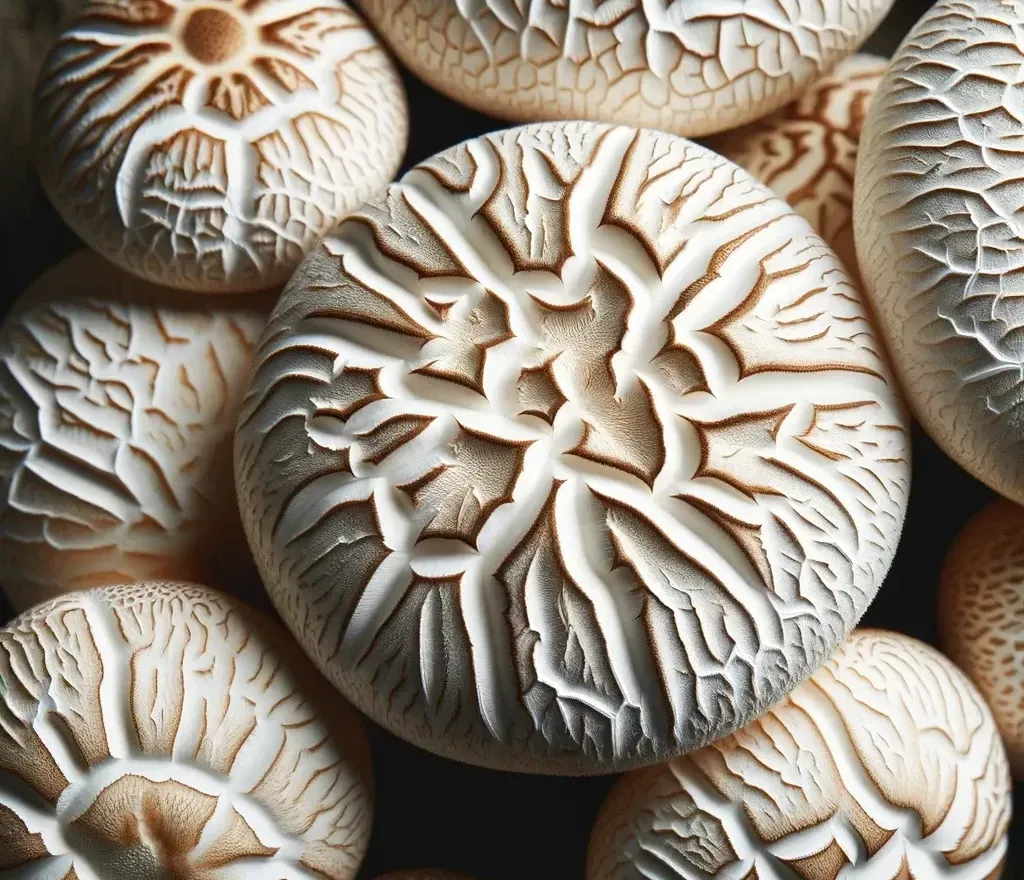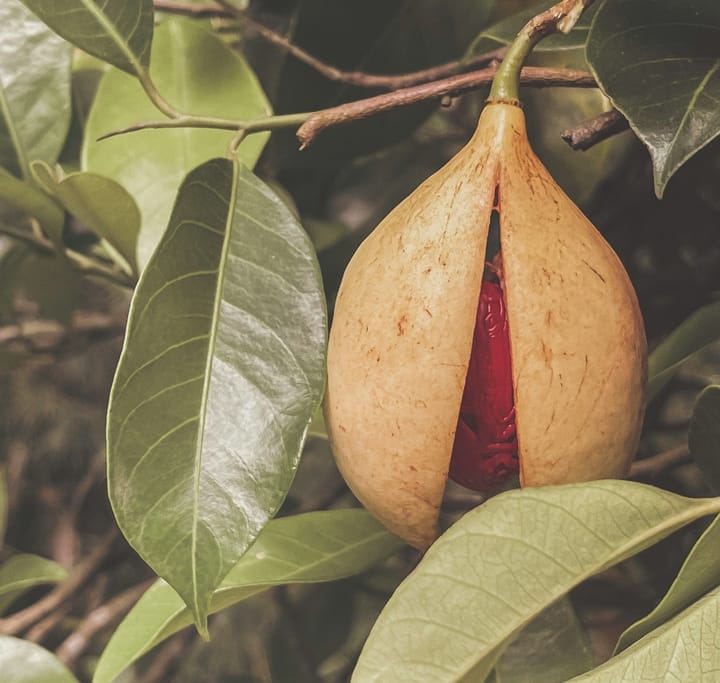Why is White Flower Shiitake Mushroom So Expensive?
Japan’s white flower shiitake mushrooms, with their distinctive cracked caps and strong flavor, are challenging to grow commercially. Their fragility, especially to rain, makes forest-grown shiitakes costly due to the difficult cultivation process. Here's why they're so expensive.

Japan stands out as a leading producer of shiitake mushrooms, known for their challenging cultivation, especially using a 1,000-year-old method that involves growing them on logs.
In the U.S., shiitakes grown indoors typically sell for about $8 per pound, but those cultivated in natural forest settings can command prices as high as $18 per pound.
The most premium variety, known as white flower shiitake, features distinctive white cracks on their caps and a potent flavor.
These forest-grown white flower shiitakes are extremely valuable, sometimes exceeding $160 per pound, due to their delicate nature—just a few raindrops can ruin them.
Here's a deeper look into why these forest-grown shiitake mushrooms are so costly.
What is Shiitake Mushroom?
White flower shiitake mushrooms, referred to as "Hua Gu" in Chinese, are a highly esteemed variety of shiitake mushrooms celebrated for their distinct appearance, texture, and flavor.
These mushrooms are characterized by their thick, meaty caps adorned with a unique white, crackled pattern resembling a flower, which gives them their name, "white flower."
This floral-like pattern occurs naturally due to specific growing conditions, such as fluctuations in temperature and humidity, causing the caps to crack and expose the white flesh underneath.
Reasons for Their High Cost
Inoculation Process
The process of inoculating white flower shiitake mushrooms is intricate and requires careful attention to detail to achieve a high-quality and premium yield.
This begins with selecting high-quality hardwood logs, typically oak, which are cut during winter to ensure they have a high sugar content essential for mushroom growth.
These logs are then cut into manageable lengths, approximately one meter long, and left to rest for several weeks to allow natural antifungal compounds to dissipate.
Once the logs are prepared, holes are drilled into them in a diamond pattern, spaced about 15 centimeters apart and drilled to a depth of around 1.5 centimeters.
The next step involves inoculating the logs with shiitake spawn, which is made up of mycelium grown on a substrate such as sawdust.
Mycelium, the vegetative part of the fungus, is critical for the mushrooms' development.
To prevent contamination and maintain moisture, the inoculated holes are sealed with hot wax, protecting the spawn from external pathogens and environmental factors.
Following this, the logs are stacked in a shaded, moist environment for an incubation period lasting between 6 to 18 months.
During this period, the mycelium colonizes the wood, breaking it down and absorbing nutrients.
Once the logs are fully colonized, they are soaked in cold water for 24 to 48 hours to shock the mycelium into fruiting, simulating natural rainfall and prompting the mushrooms to begin growing.
When the white flower shiitake mushrooms start to appear, they are closely monitored and harvested when the caps are about 70-80% open to ensure optimal flavor and texture.
Challenges of Growing White Flower Shiitake Mushroom
Growing White Flower Shiitake mushrooms (Lentinula edodes) in the wild of Japan presents several challenges, primarily due to their sensitivity to climate and environmental conditions.
These mushrooms thrive in specific temperature ranges, ideally between 50-80°F (10-27°C). Both extreme heat and cold can hinder their development or destroy the crop.
Additionally, they require a high humidity environment, typically between 80-95%. Inconsistent humidity levels can result in poor yields or malformed mushrooms.
The seasonal variations in Japan further complicate the cultivation process. Spring and autumn provide moderate temperatures and humidity, making these seasons ideal for Shiitake growth.
However, fluctuations within these periods can still pose challenges. In contrast, harsh winters and hot summers can halt mushroom growth, necessitating careful planning to ensure that logs or substrates are inoculated and managed properly during optimal seasons.
Suitable substrate availability is another critical factor. Shiitake mushrooms traditionally grow on hardwood logs such as oak and beech.
Ensuring the availability and sustainability of these logs is vital, as overharvesting can lead to deforestation and ecological imbalance.
The preparation of logs is labor-intensive and requires precise timing. They need to be cut during the dormant season (late winter) and aged for a specific period before inoculation.
Pest and disease management is a constant concern. Various insects, such as beetles and flies, can infest the logs and damage the mushroom mycelium.
Additionally, competing fungi can contaminate the logs, outcompeting the Shiitake mycelium. Proper sanitation and monitoring are essential to prevent these issues.
Environmental factors such as natural disasters pose significant threats. Japan is prone to typhoons, earthquakes, and heavy rains, which can damage cultivation sites and disrupt the growth cycle.
Wildlife, including animals like deer, rodents, and birds, can disturb the logs and consume the developing mushrooms.
The cultivation process itself is labor-intensive. Manual inoculation involves drilling holes, inoculating with spore plugs, and sealing with wax, which is both time-consuming and labor-intensive.
Log maintenance requires regular watering and continuous monitoring for signs of growth or contamination.
Finally, market and economic factors play a crucial role. While White Flower Shiitake mushrooms are prized for their flavor and texture, market demand can fluctuate, affecting the profitability of cultivation.
The costs associated with labor, materials, and maintenance must be balanced with the potential market price. High initial investments and uncertain returns can pose challenges for cultivators.
Sorting Process
Harvesting: The white flower shiitake mushrooms are carefully harvested to ensure minimal damage. This is usually done early in the morning to retain moisture content.
Initial Cleaning: After harvesting, mushrooms are gently brushed to remove any dirt or debris. Washing is avoided to prevent excess moisture absorption, which can affect the drying process.
Inspection: Each mushroom undergoes a thorough inspection for quality. The criteria for inspection include size, color, shape, and the absence of blemishes or pests. Based on these factors, the mushrooms are sorted into different grades. High-grade mushrooms exhibit a uniform shape, size, and a vibrant white flower pattern.
Manual Sorting: Workers manually sort the mushrooms on conveyor belts or tables, categorizing them according to the inspection criteria. Any damaged or discolored mushrooms are set aside for other uses or further processing.
Mechanical Sorting: In advanced facilities, optical sorting machines equipped with cameras and sensors are used to automate the sorting process. This ensures consistency and efficiency in categorizing the mushrooms.
Drying Process
Pre-Drying Preparation: Once sorted, the mushrooms are spread out in a single layer on drying trays, allowing for even air circulation around each mushroom. If necessary, they may undergo a pre-drying phase using low heat to slightly reduce moisture content before the main drying process.
Drying Methods
- Sun Drying: Mushrooms are placed in a well-ventilated area under direct sunlight. They are covered with a mesh or netting to protect them from insects and dust. While this traditional method is effective, it is weather-dependent and takes several days.
- Air Drying: Mushrooms are placed in a controlled environment with low humidity and good airflow. Fans and dehumidifiers may be used to enhance the drying process, which can take a few days to a week.
- Mechanical Drying (Dehydrators): Mushrooms are placed in commercial dehydrators set to a temperature between 50-60°C (122-140°F). The drying process is closely monitored to prevent over-drying, which can affect the texture and flavor. This efficient method typically takes 6-12 hours.
Monitoring and Turning: Throughout the drying process, mushrooms are regularly checked for progress. They are turned or shuffled to ensure even drying and to prevent mold growth.
Final Drying Stage: Once the mushrooms reach the desired dryness, typically 10-15% moisture content, they are moved to a final drying stage. This involves lower temperature drying to ensure any residual moisture is removed without cooking the mushrooms.
Cooling and Conditioning: After drying, the mushrooms are allowed to cool at room temperature. They are then placed in airtight containers for a conditioning period, which helps to equalize the moisture content throughout the batch.
Quality Control: The final product undergoes an inspection for uniform dryness, appearance, and quality. Any mushrooms that do not meet the standards are removed.
Packaging: The dried white flower shiitake mushrooms are packaged in moisture-proof, airtight packaging. They are then stored in a cool, dark place to preserve their quality until they reach the consumer.
The Growing Demand for White Flower Shiitake Mushrooms in New York
White Flower Shiitake mushrooms, a variant of the traditional Shiitake, have seen a significant increase in demand in New York and across the United States.
This trend is driven by several factors, including their unique culinary qualities, nutritional benefits, and the rising interest in exotic and gourmet ingredients.
Unique Culinary Qualities: White Flower Shiitake mushrooms are prized for their delicate flavor and texture.
Unlike their darker counterparts, these mushrooms have a milder taste and a more tender, velvety texture, making them versatile in various dishes.
Their aesthetic appeal also adds to their popularity, as the white caps and intricate gill patterns provide a visually striking element to culinary presentations.
Nutritional Benefits: White Flower Shiitake mushrooms are not only delicious but also packed with nutrients.
They are a rich source of vitamins B and D, essential minerals such as selenium, copper, and zinc, and dietary fiber.
Additionally, they contain compounds like polysaccharides and lentinan, which have been studied for their potential immune-boosting and anti-cancer properties.
Interesting Facts:
- Historical Significance: Shiitake mushrooms have been cultivated in Asia for over a thousand years. The white flower variety has long been considered a delicacy, particularly in Chinese and Japanese cuisine.
- Traditional Medicine: Shiitake mushrooms, including the white flower variety, have been used in traditional medicine for their purported immune-boosting and anti-inflammatory properties.
- Sustainability: High-quality shiitake mushrooms are often grown on natural logs in a sustainable manner, which adds to their appeal for environmentally conscious consumers.
Difference between Japanese and Chinese Shiitake Mushroom
Flower Shiitake mushrooms (花菇), predominantly cultivated in China, thrive in greenhouses where they grow on wood shavings inside plastic bags.
This controlled setup prevents moisture from reaching the mushroom caps, resulting in characteristic white cracks if they remain dry.
While this method supports large-scale, cost-efficient production, it often compromises the taste and quality of the mushrooms.
In contrast, Japanese Shiitake mushrooms are cultivated using a 1,000-year-old method in natural forest settings, specifically on sweet sap oak (sawtooth oak) logs.
These mushrooms are exposed to natural elements without any protective coverings. This sustainable technique involves allowing seedlings to sprout from oak stumps each spring, promoting forest regeneration.
Japanese growers do not use chemicals or insecticides, and the sweet sap oak imparts a distinctive sweet and deep flavor to the mushrooms.
The mushrooms grow slowly in low temperatures, nurtured by natural rain and fog, which results in a firm texture.
This natural cultivation process enhances the taste and texture of the Shiitake mushrooms, making them highly sought after.
The most premium variety, Hana Donko, is an exquisite delicacy found only in protected areas under tree logs.


